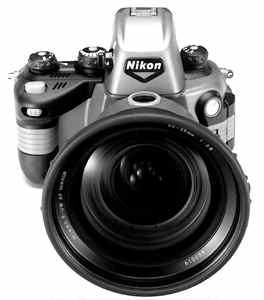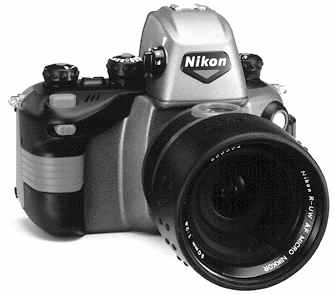| The Nikonos Programme |
Underwater SLR, the Nikonos-RS |
| All the time the different Nikonos generations were being perfected, ambitious divers and amateur underwater photographers regularly asked Nikon when they could expect an underwater SLR. The fact that Nikon was asked was both flattering and logical, for who else had the know-how and had cared for them in the past? Bearing in mind how expensive such a camera would have to be - an SLR calls for a completely new set of lenses, for example - and how small the target group for such an instrument must be, nobody really expected one. So when Nikon announced the world`s first fully-fledged UW-SLR system early in 1992 the surprise - and the suspense - was great. When it was finally unveiled, the astonishment and the respect was even greater. The Nikonos-RS combines most of the desired features of the proven Nikonos viewfinder models as well as the latest technology appreciated in cameras such as the F-601! |
 |
| The world's first fully-fledged underwater, autofocus SLR, the Nikonos-RS, with the R-UW AF Nikkor 20-35mm, f/2.8 |
| But what an amazing piece of machinery it is, watertight down to an almost unbelievable 100m, autofocus operation including focus tracking and freeze-focus functions (only available in other Nikon cameras with an additional multifunction-back), Matrix metering including Matrix balanced fill-flash control, aperture priority automatic exposure mode or manual operation with 75/25% centre-weighted metering, shutter speeds from 1/2000 to 1 sec. and B with sync-speeds up to 1/125 sec. including the choice between front or rear blind sync modes, completely automatic film handling with integrated motors including automatic DX-coding from ISO 25/15° to 5000/38°, and a large action-type viewfinder including all the necessary indications with illuminated LCDs. |
| Out of breath? You will be if you have to carry the camera around - the body alone weighs 2.06 kilos while under water it is 920g. It is so large people are always asking how long Nikon have been producing a medium-format camera. But when you take a look at the bayonet it seems very familiar. Except for two details it is exactly like that of other Nikon SLR`s. The claws are not situated at the same angles and there are actually two bayonets. |
| The second, larger one fastened to the outer body of the camera helps to secure the equally weighty lenses by their metal barrels. |
 |
| The R-UW AF Micro-Nikkor 50mm,f/2.8, which allows reproduction ratios continuously down to 1:1, is one of the three new lenses specially developed for the Nikonos-RS |
| Which brings us to the three completely new lenses. The R-UW AF-Nikkor 28mm,f/2.8 will most likely develop into the standard focal length since it is the lightest of the trio at 550 grams and has a universally usable picture angle of 60° under water. Its six independent elements indicate a modern construction and of course its distance scale is illuminated. The next in line is a specialist, the R-UW AF Micro-Nikkor 50mm,f/2.8 which permits reproduction ratios to 1:1 continuously without additional accessories and including automatic focusing. Although all three presently available lenses have been designed for underwater use, this unit will produce pictures of acceptable quality with only slight colour fringes out of water. The image the other two produce in the viewfinder out of water is best described by a slightly annoyed Nikon demonstrator`s outburst after being constantly questioned on the last day of Photokina: ''As you can see, there is nothing to be seen.'' But a blur, we should add. Which is particularly sad because it means the enjoyment of the world`s first underwater zoom lens will remain confined to those who can experience it under water. The R-UW AF Zoom-Nikkor 20-35mm,f/2.8 offers spectacular angles of view, continuously from 51° to 80°, with a design incorporating just 10 independent elements. Only now do we know what we have missed in the past. |
| back to Nikon COMPENDIUM main page |